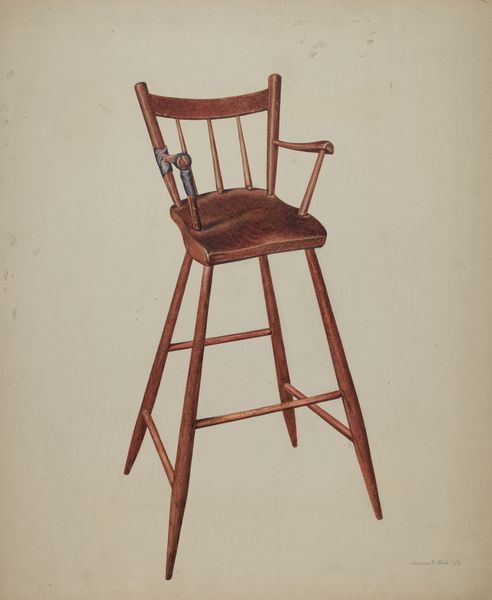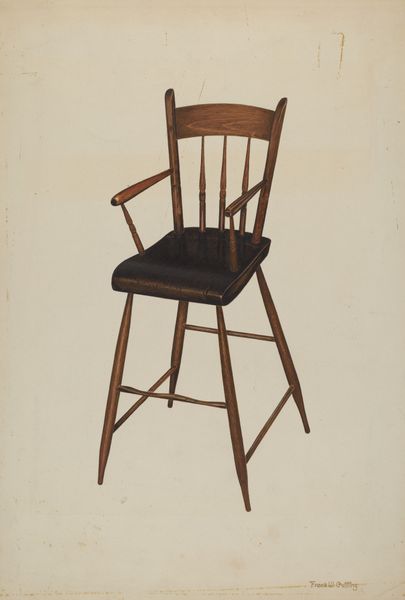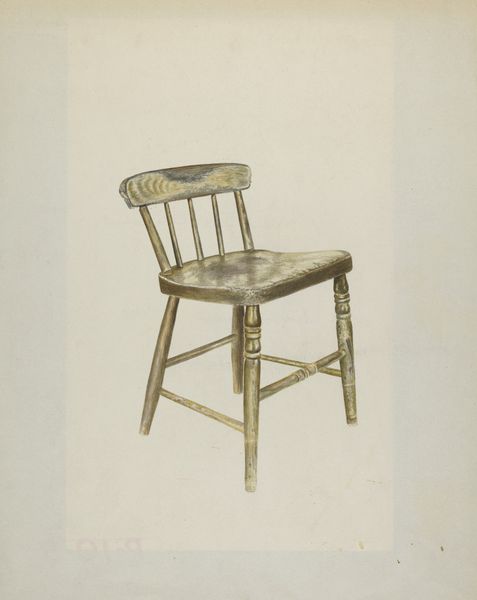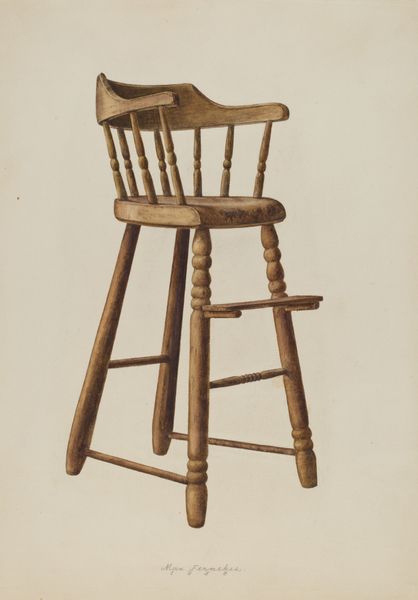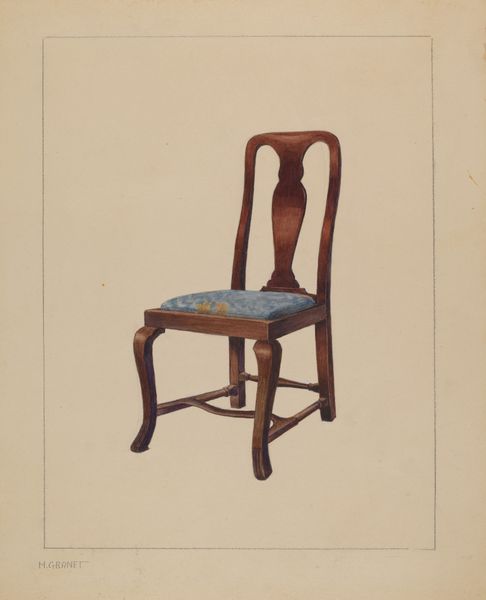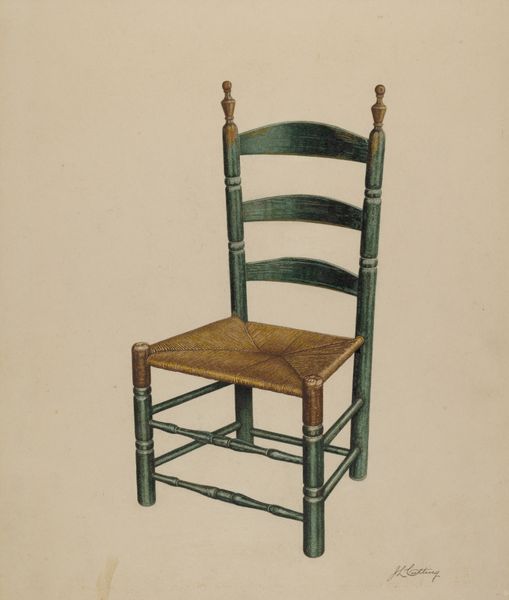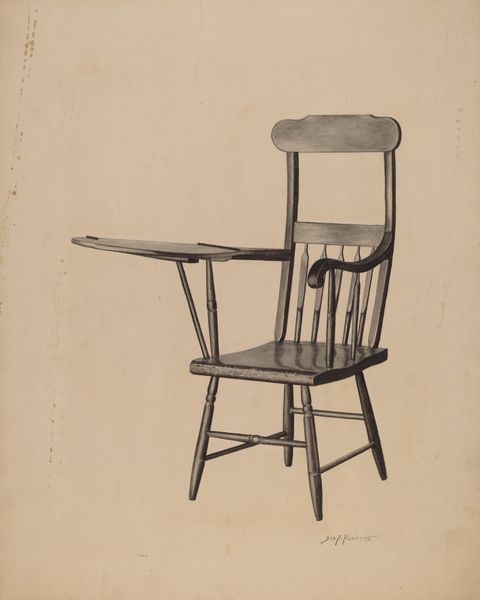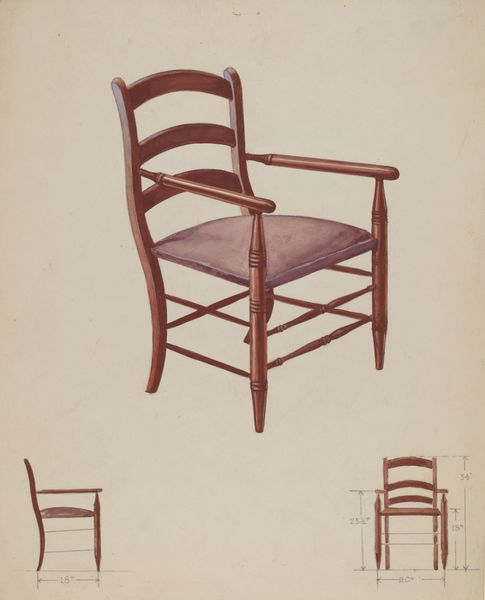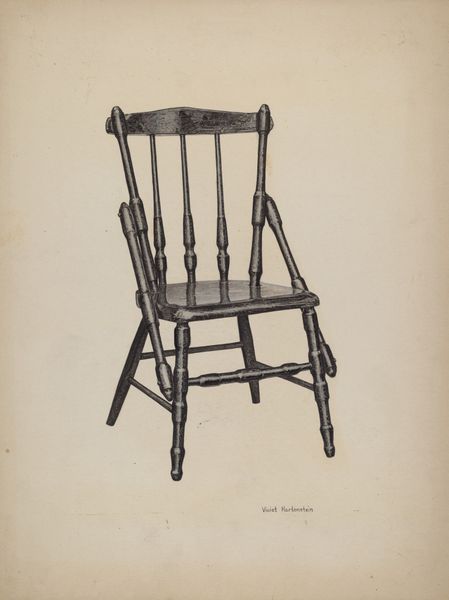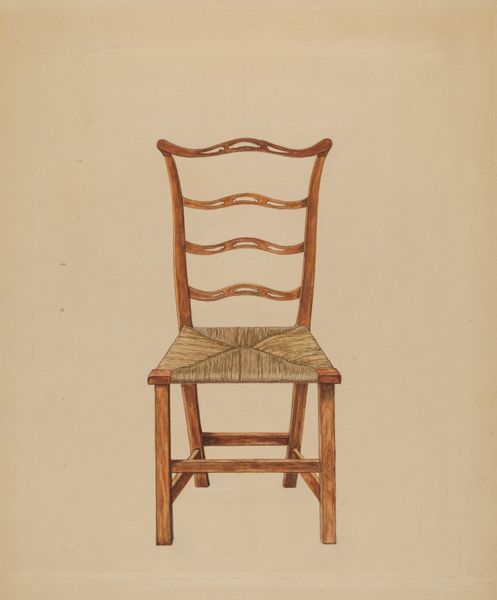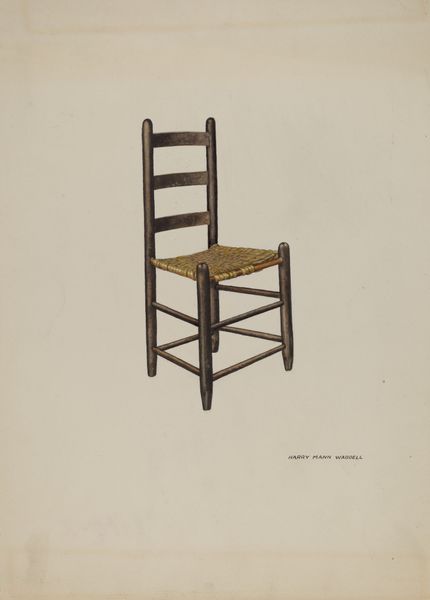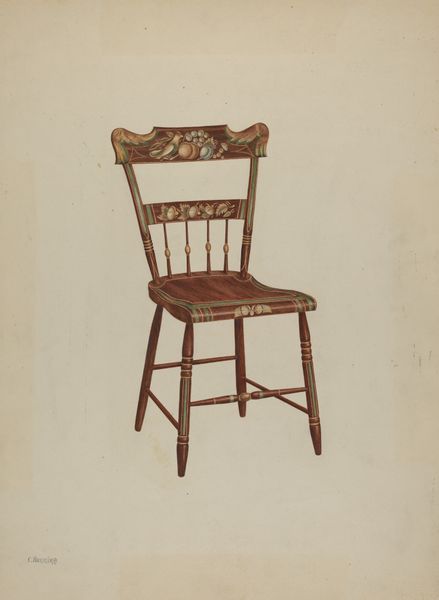
drawing
#
drawing
#
watercolour illustration
#
genre-painting
#
watercolor
#
realism
Dimensions: overall: 35.5 x 24.4 cm (14 x 9 5/8 in.) Original IAD Object: 29"; seat 10" x 12"
Copyright: National Gallery of Art: CC0 1.0
Curator: Standing before us, we have "Child's High Chair," a watercolor illustration created around 1938 by Michael Chomyk. It's a charmingly simple work, don't you think? Editor: Intensely evocative. It has the solemn air of a relic, or perhaps a stage prop, awaiting a player who won't arrive. It’s a watercolor illustration, but the treatment of the surface is far from decorative or ornamental. Curator: Absolutely, the stark presentation contributes to this feeling of a captured, bygone moment. Chomyk's realism is precise; we see the delicate hatching giving volume to the chair legs and arms. It highlights the formal elements and, to a great extent, strips them from domestic sentiment. Editor: Quite so. Note, too, how the chair’s design is elegantly rational. There's a deliberate economy in the construction. Look closely at the joinery, it all comes down to fundamental geometry; the composition subtly juxtaposes squares and circles, culminating in this remarkably balanced object. Curator: True, and this focus throws the spotlight on a poignant, almost invisible absence—that of the child meant to occupy the chair. It’s not just a chair, it represents family life, warmth, and stages of life, but drained and still. Editor: The palette, a careful spectrum of browns, tans, and umbers, seems deliberately muted, as if age and light have washed away vividity of youthful messiness. This enhances that austere quality we noted before, guiding our attention to texture and structural relationships. Curator: Right. Although categorized as realism, this isn’t a joyful representation. The precise rendering allows for the silent storytelling to happen, inviting questions more than offering answers about this chair’s narrative. The chair appears very fragile too, although seemingly stable, as if held by the power of its very function, its raison d’etre… Editor: Agreed. I wonder about Chomyk's intentionality here. Is it a document, a memento mori, or perhaps an unsentimental exploration of familial dynamics? Either way, it lingers, prompting reflection on the unseen stories embedded within such ordinary objects.
Comments
No comments
Be the first to comment and join the conversation on the ultimate creative platform.
